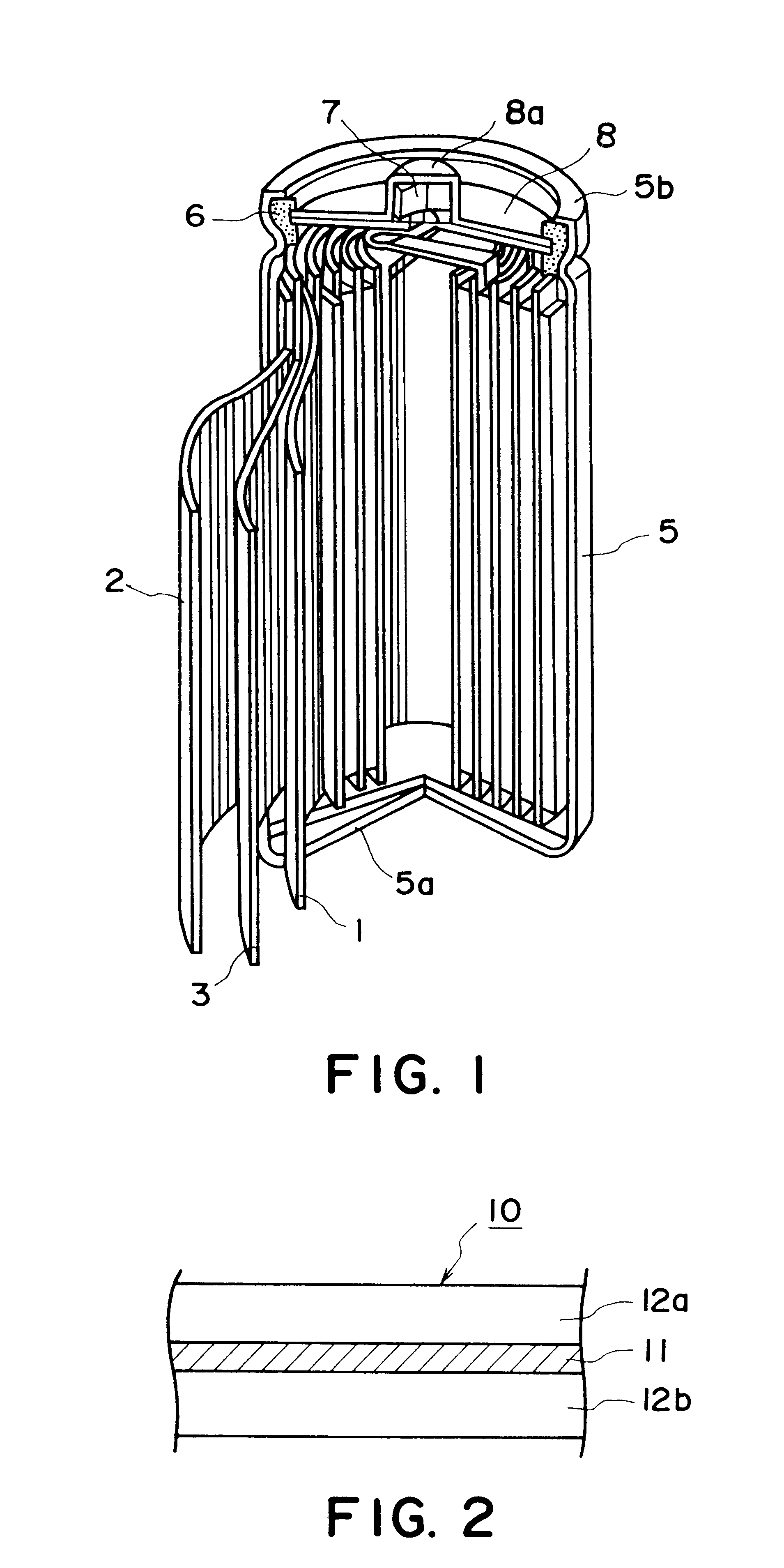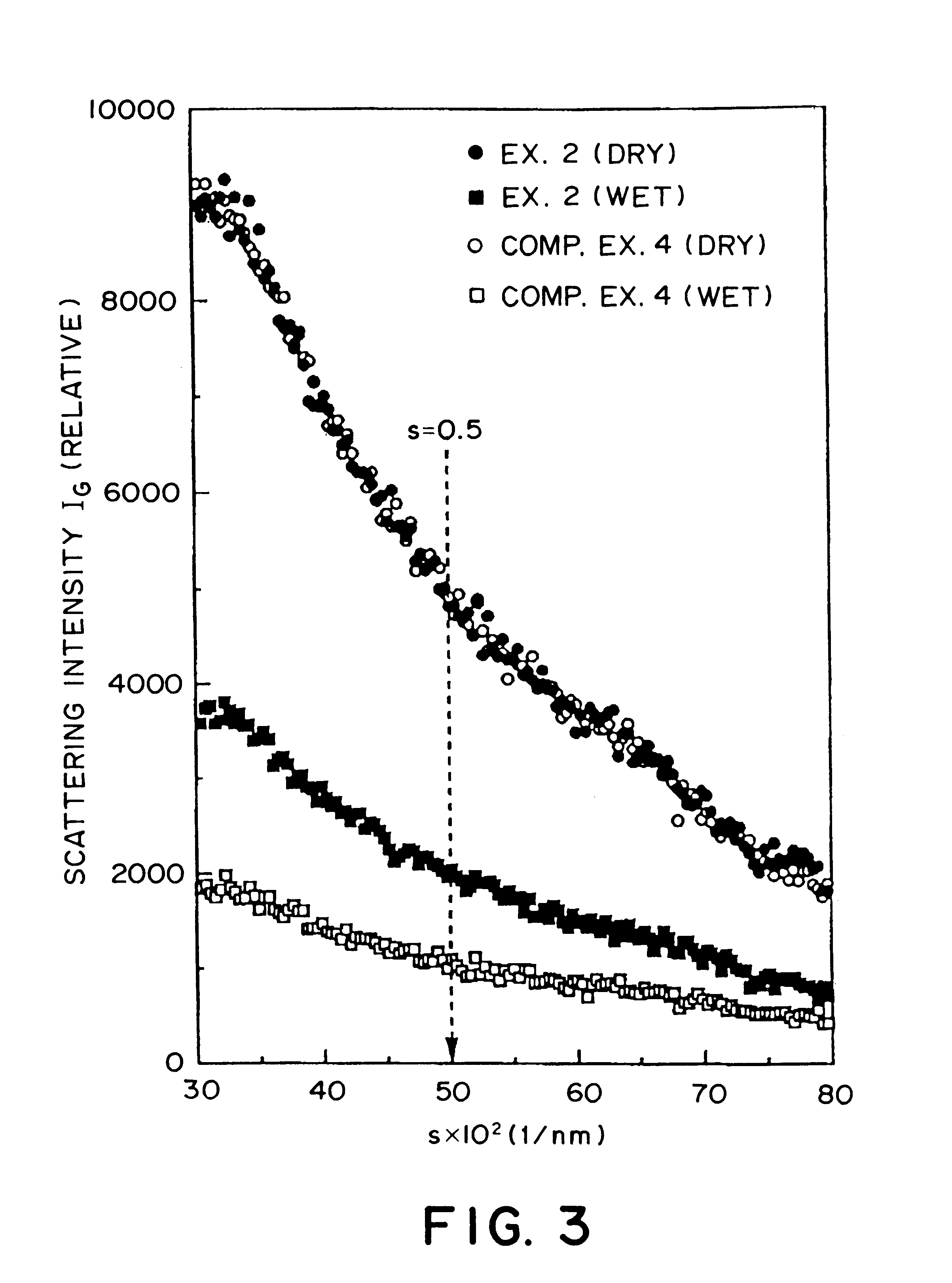Carbonaceous electrode material for secondary battery
a secondary battery and carbonaceous electrode technology, applied in the direction of cell components, iron halides, conductors, etc., can solve the problems of inferior charge/discharge repetition performance of secondary batteries constituted by using carbonaceous materials with a developed graphite structure, small capacity of negative electrodes for doping and dedoping of active substances, and low irreversible capacity , to achieve the effect of effectively utilizing an active substan
- Summary
- Abstract
- Description
- Claims
- Application Information
AI Technical Summary
Benefits of technology
Problems solved by technology
Method used
Image
Examples
example 1
94.2 g of phenol (reagent-grade, available from Kanto Kagaku K.K.) and 80.6 g of 37%-formalin were placed in a separable flask equipped with a Dimroth condenser, and stirred for mixing therein, followed further by addition of 14.0 g of 20% sodium hydroxide aqueous solution and stirring for mixing. The resultant solution was reacted at a temperature of 85-95.degree. C. for 6 hours on a mantle heater. After the reaction, the reaction product was cooled to room temperature to obtain 152 g of phenol-formaldehyde initial condensate. The initial condensate was placed in a vessel formed by a copper foil and cured at 150.degree. C. for 12 hours in a drier ("EYELA NED-300", available from Tokyo Rika Kiki K.K.) to obtain 95 g of a phenolic resin. Then, the phenolic resin was crushed to diameters of ca. 1-2 cm, heated to 600.degree. C. at a rate of 200.degree. C. / h in a nitrogen gas atmosphere (normal pressure) and held at 600.degree. C. for 1 hour for pre-calcination to obtain a carbon precur...
examples 2 and 3
Carbonaceous materials were prepared in the same manner as in Example 1 except for changing the main calcination temperature to 1200.degree. C. (Example 2) and 1300.degree. C. (Example 3), respectively.
example 4
5 g of the powdery carbon precursor prepared in Example 1 was charged in a horizontal tubular furnace (inner diameter=100 mm) and heated to 1200.degree. C. at a rate of 5.degree. C. / min and held at 1200.degree. C. for 1 hour for main calcination under a nitrogen stream (of 10 liter / min at a pressure of 1 atm), followed by cooling to produce a powdery carbonaceous material.
PUM
| Property | Measurement | Unit |
|---|---|---|
| particle diameter | aaaaa | aaaaa |
| pressure | aaaaa | aaaaa |
| temperature | aaaaa | aaaaa |
Abstract
Description
Claims
Application Information
 Login to View More
Login to View More - R&D
- Intellectual Property
- Life Sciences
- Materials
- Tech Scout
- Unparalleled Data Quality
- Higher Quality Content
- 60% Fewer Hallucinations
Browse by: Latest US Patents, China's latest patents, Technical Efficacy Thesaurus, Application Domain, Technology Topic, Popular Technical Reports.
© 2025 PatSnap. All rights reserved.Legal|Privacy policy|Modern Slavery Act Transparency Statement|Sitemap|About US| Contact US: help@patsnap.com


